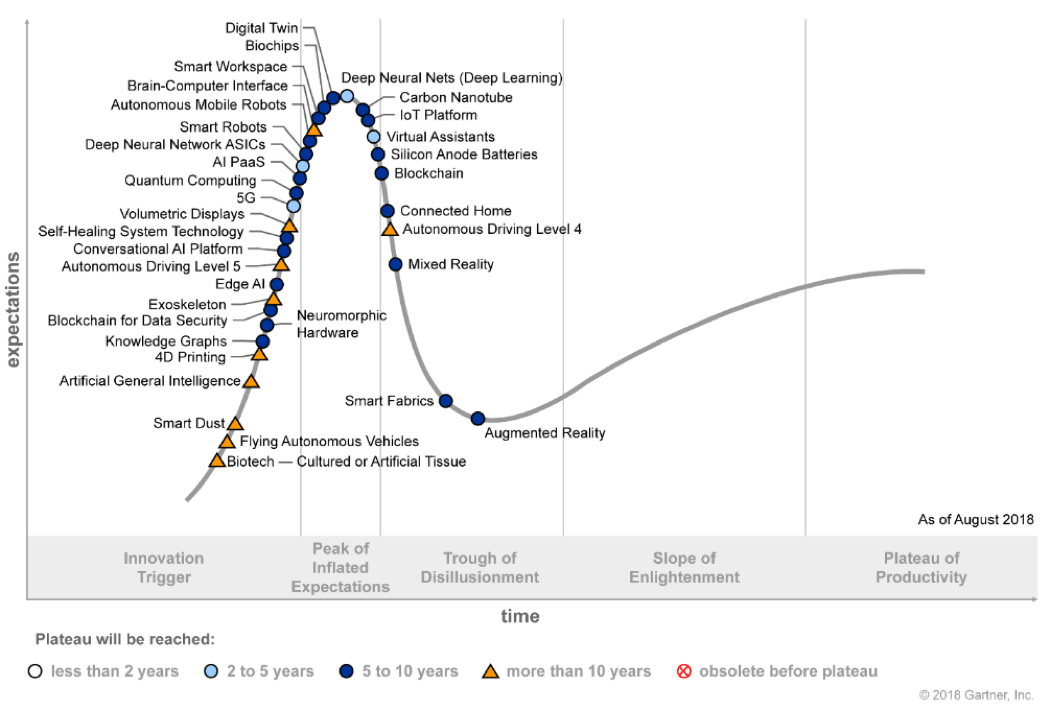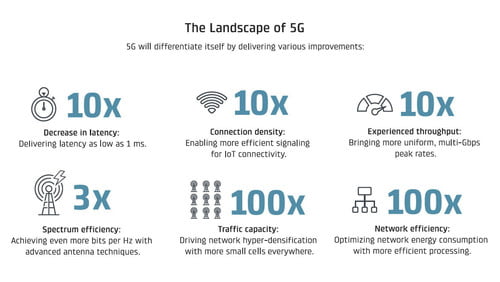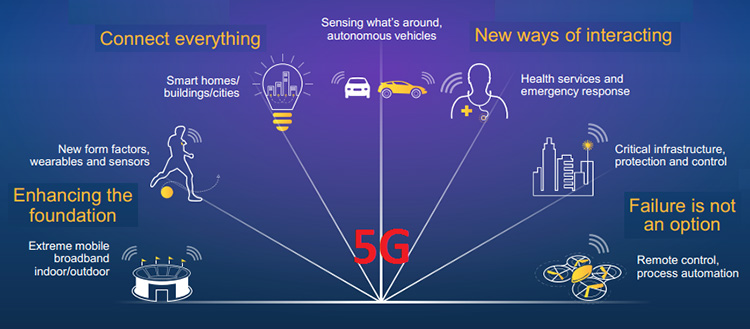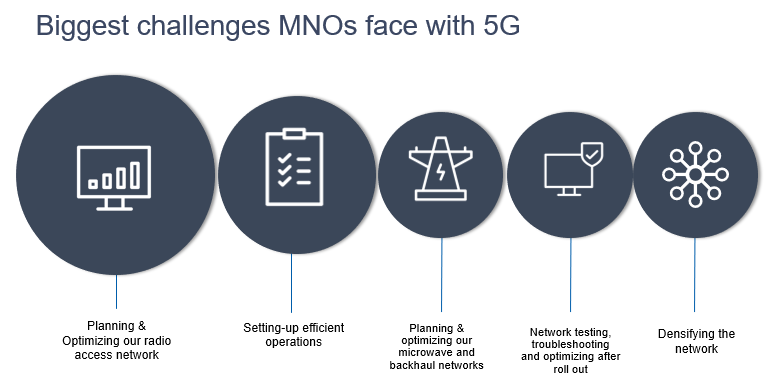5G - Possibilities and Prospective
12 November, 2019

There are times when we want a new technology so bad that we push and push to get the developers to get it on the market. We hype its capabilities. We speculate how much more we’ll be able to do with it. Yet, the dream for the real deal is still in the future. Such is the case with 5G communications. The outlooks are varied from one potential manufacturer to another. The industry influencers and technology followers always insert a caveat into its reality, leaving the result that we get conflicting interpretations of what to expect from 5G. Are we ready to jump the precipice from 4G LTE reality to the promise of what 5G claims to be able to deliver?
The Current State of Emerging Technologies According to Gartner

I like to start with Gartner because they put hype in the right perspective. It’s an independent look at technologies like 5G that presents hype in its true colors. You certainly can’t trust the other type of hype spewed out in company press releases and what you see on the news. They are biased in their claims using fictional marketing language to push the consumer to new heights of hysteria. Yes, consumer hype equals hysteria. Gartner hype equals an objective look at reality. Consider the Gartner hype cycle that’s published every year. The 2018 version is shown below. The red arrow points to 5G technology. It is on the steep upslope of the innovation trigger phase of the hype cycle, and its light blue color indicates that it is two to five years away from the plateau of productivity.
In Gartner’s words, those technologies on the innovation trigger slope are emerging technologies. This is what that means:
“Interesting, in the early stages of research and development, we see technologies that already on the minds of many technology enthusiasts: Flying Autonomous Vehicles and Biotech. But these are still 10+ years away from product development and high adoption growth.
Reaching higher expectations are conversational AI platforms, 5G, and quantum computing.”
So, the current industry hype is driving higher expectations for a technology not set to mature for at least another two to five years.
Overview of 5G

The question we are trying to answer is, what is 5G, and is it available today? So as not to keep you in suspense, the answer is that the full range of 5G planned capabilities will not be available until two to five years from now (Gartner prediction), but there are claims of companies launching initial versions of 5G soon (industry hype). Soon, means that 5G test networks are popping up all over the world. China, in particular, is pushing very hard to make it to the finish line first.
The only common description we have of 5G is that it’s the next generation of telecommunications that will replace the 4G LTE standards. It’s not that simple, and the industry is further confusing the expectations by offering a less than fully functional versions of the real 5G expectation, but calling it 5G without reservation or caveat.
Clearing the Air
The commencement of 5G commercial services begins with the roll-out of devices capable of meeting release 15 of the 3GPP specifications of NR Phase 1. 3GPP is the global organizational entity in charge of developing the 5G specification as well as its system development and deployment. The current news on the 3GPP website has a great article written by Dr. Sassan Ahmadi from Stanford University about what to expect from 5G. It’s dated October 9, 2019, and is an excellent read if you want to dig into the details of what to expect from 5G.

Listed below are the essential characteristics of release 15, but not the full set.
- “Non-standalone mode of operation (e.g., utilizing LTE core and LTE as an anchor carrier)
- Component carrier bandwidths of up to 100 MHz in spectrum below 6 GHz; up to 400MHz component carrier bandwidths in spectrum above 6 GHz
- Support for carrier aggregation
- Support for both digital and analog beamforming
- Variable subcarrier spacing”
Release 15 NR2 of 5G, as well as future releases, are planned that will fully define what it means to implement all the functionality of 5G as it was envisioned up through the 2025 prediction that Gartner has estimated. It’s always possible that there will be more functionality designed into 5G along the way after 2025.
Why 5G is Needed

It is estimated that there will be 37 million 5G enabled mobile phones by the end of 2019. By 2025, there will be 525 million. Add to those numbers the massive creation of more IoT connected devices. What is instantaneous on a 4G mobile system today will end up having to be buffered on a 4G network in 2025? We are at the tipping point in being able to meet the demands of the consumer. 5G will deliver faster data speeds, lower latency (response time), and increase connectivity (more bandwidth). It will keep up with what you have now and build in room for much more. The drive to be fully connected will never stop. Cities will be made to be smart with things like smart traffic signals, autonomous vehicles, and so much more. We need the additional capability.
Tech Talk
As was implied earlier in this article, 5G is not as simple as saying 5G. There are three distinct use cases for the implementation of the full capability of 5G. Enhanced mobile broadband with fixed wireless access (eMBB and FWC for the typical consumer on the street), mission-critical applications (police, military, and national/global emergencies), and to serve the exponentially increasing IoT market (manufacturers selling you wearables and instant entertainment systems, things to control the environment of your home; the list goes on and on.
The Challenges Still Facing 5G
Designing for enough frequency, spectrum, and bandwidth will always be a challenge. The problems that 5G faces. 5G is planned to be offered at 6 GHz versus the dual frequencies of 2.4 and 5 GHz for 4G LTE as well as at higher frequencies in the mmWave region. mmWave is defined as anything above 6 GHz. Network operation between 5 and 6 GHz will be marginally faster than what 4G LTE delivers (eMBB and FWC operations for the typical user). The reason it won’t seem super-fast to the average user is that the bandwidth at 6GHz and below is a crowded spectrum.

Above 6 GHz, in the mmWave spectrum, bandwidth is wide open because nothing else today operates at those frequencies. We talked about the 3GG organization and its development of the technical “rules” for 5G earlier. This is where the buck stops. The physics of the matter limits 5G to 100 MHz carrier bandwidths below 6 GHz. In the mmWave spectrum, that bandwidth balloons to 400 MHz You can move a whole lot more information through a 400 MHz pipe.
But, the mmWave operations come at a price. Again, physics rules and signal propagation is limited in that spectrum. In other words, the 5G signal above 6 GHz will not travel as far as the 5G signal below 6 GHz. The impact is that high capacity mmWave communication will have to have a lot more base stations (cell towers) to provide signal continuity from inception to delivery. That kind of infrastructure isn’t cheap.
The impact on the average user is this. Even if your network provider offers 5G, you will still be operating under the 4G infrastructure for non-data tasks. Your call to grandma in Kansas from where you live in Pennsylvania will still use the older technology. It will be the same case for Facetime, Alexa, Siri, and all the other instant communication apps out there (WhatsApp, Skype, etc...)
Conclusion
We could talk about the future tech that will meet some of these challenges head-on for hours. Things like multi-input/multi-output (MIMO), which are multiple radio antennas per base station, and multi-cell towers near the device will eliminate interference and increase capacity. Beamforming technology in the mmWave spectrum combined with MIMO enhances spectral efficiency and turns your signal into a smart, targeted, and individuated beam. Signal interference drops, and makes picking up your singal harder to detect for the hackers sitting in an internet café waiting for you to sign onto a public network. However, that is premature, given that we haven’t even fielded the first implementation of 5G that adheres to 3GG release NR 1.
Blog Post written by Mathew Peters- Wake Industrial Team










